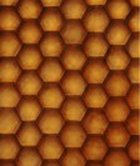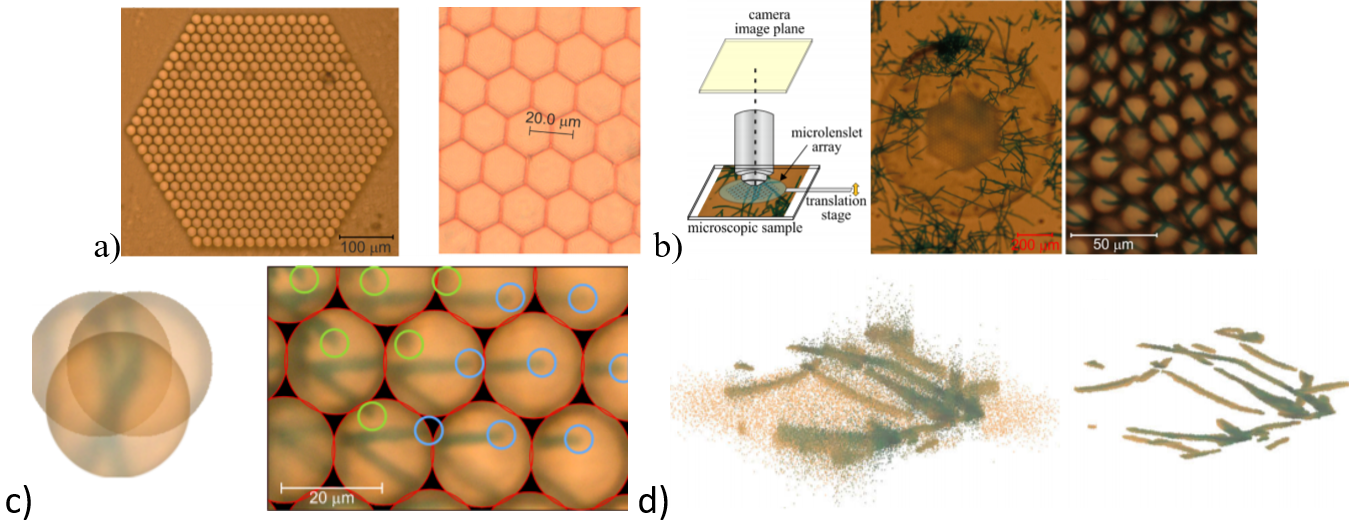
Optical fibers are known and widely used in telecommunications and the construction of optical instruments for about sixty years. Properties of optical fibers are determined by the distribution of the refractive index in the cross-section of the fiber, which is directly related to its structure and material composition. However, the currently available methods of optical fibers fabrication do not allow to freely shape the refractive index distribution. The solution is a completely new concept of shaping the refractive index distribution proposed by prof. R. Buczyński. It consists of constructing a fiber by stacking it from nanostructured elements. In this approach, the effective medium theory is used to build the fiber core. This concept consists of arranging the optical fiber core from only two types of glass rods that differ in their refractive index. With suitably small diameters of the rods, i.e. below 1/5 of the wavelength used, the core material is characteristics by effective properties, i.e. its properties are averaged.
The new micro-optical element is designed based on the results of optical simulations based on the following methods: ray-tracing, beam propagation (BPM), finite element (FEM), the finite difference (FDE), and finite difference in the time domain (FTDT). For the optimization of the micro-elements structure the following algorithms are used: simulated annealing, genetic algorithms, and random walk. The elements are stacked from two types of glasses and drowned on the optical tower. The obtained microstructural optical fiber is cut into shorter elements, often with a thickness of several dozen micrometers. Each of these microelements is a fully functional optical component. In this way, we have fabricated micro-optical elements such as gradient microlenses, phase masks, and matrices of such elements. One of the main advantages of these components is their easy integration with fiber optics. This is thanks to the full optical functionality of the elements contained in the material and it is not necessary to modify the surface geometrically. As a result, the components are characterized by flat surfaces.

Fig. 1 Examples of optical components: a) nGRIN microlens, b) microlens array, c) phase mask for generating an optical vortex, d) integration of the optical fiber, glass spacer with an optical micro-component with a thickness of approx. 33 µm.
The fabricated micro-optical elements were used, among others for building the world's smallest Shack-Hartmann detector, optical field camera for 3D imaging, and optical tweezer.

Fig. 2 An example of how the Shack-Hartmann detector works. Refractive lens shape reconstruction.

Fig. 3 Optical field camera for 3D imaging [B14]: a) GRIN microlenses array, b) imaging system, c) image reconstruction, and d) reconstructed 3D image.

Fig. 4 Diagram of the optical manipulator: a) optical fiber with an integrated nGRIN microlenser, and b) optical "holding" a silicone microsphere (yellow circle) in an aqueous solution [B13].
Publications
H. T. Nguyen, K. Switkowski, R. Kasztelanic, A. Anuszkiewicz, A. Filipkowski, H. V. Le, D. Pysz, R, Stepien, W, Krolikowski, and R. Buczynski, Optical characterization of single nanostructured gradient index vortex phase masks fabricated by the modified stack-and-draw technique, Opt. Comm. 463, 125435 (2020).
R. Kasztelanic, D. Pysz, R. Stepien, R. Buczynski, Light field camera based on a hexagonal array of flat-surface nanostructured GRIN lenses, Opt. Express. 27(24), 34985-34996 (2019)
R. Buczynski, A. Filipkowski, B. Piechal, H. T. Nguyen, D. Pysz, R. Stepien, A. Waddie, M. R. Taghizadeh, M. Klimczak, and R. Kasztelanic, Achromatic nanostructured gradient index microlenses, Opt. Express 27(7), 9588-9600 (2019).
B. Moreover, N. Bavili, Ö. Yaman, B. Yigit, M. Zeybel, M. Aydin, B. Dogan, R. Kasztelanic, D. Pysz, R. Buczynski, and A. Kiraz, Design and fabrication of large numerical aperture, high-resolution optical fiber bundles based on novel high-contrast pairs of soft glasses for fluorescence imaging, Opt. Express 27(7), 9502-9515 (2019).
A. Anuszkiewicz, R. Kasztelanic, A. Filipkowski, G. Stepniewski, T. Stefaniuk, B. Siwicki, D. Pysz, M. Klimczak, and R. Buczynski, Fused silica optical fibers with graded index nanostructured core, Sci. Rep 8, 12329 (2018).
R. Kasztelanic, A. Filipkowski, A. Anuszkiewicz, P. Stafiej, G. Stępniewski, D. Pysz, K. Krzyżak, R. Stępień, M. Klimczak, R. Buczyński, “Integrating free-form nanostructured GRIN microlenses with single-mode fibers for optofluidic systems,” Scientific Reports 8, 5072 (2018).
R. Kasztelanic, A. Filipkowski, D. Pysz, R. Stepien, A.J. Waddie, M.R. Taghizadeh, R. Buczynski, “High-resolution Shack-Hartmann sensor based on an array of nanostructured GRIN lenses,” Optics Express 25(3), 1680–1691 (2017).
;;;
